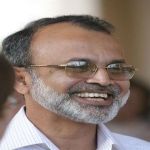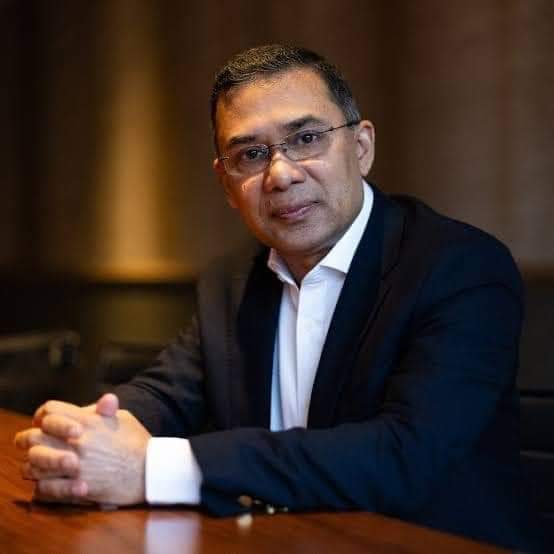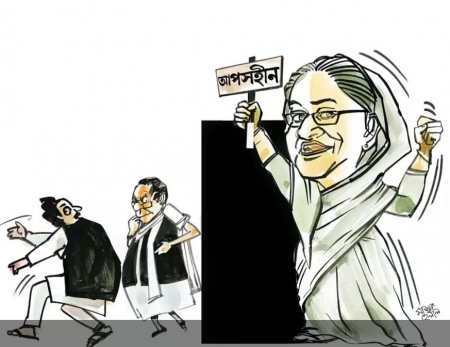Introduction
The ‘First of May’ of every Gregorian calendar year, popularly called the ‘#May_Day’, is a government holiday in many countries around the world, including Bangladesh. All labour-oriented organizations celebrate the day with great honour and dignity, and it is promoted by the #international_labour_movement. The month of May also bears the legacy of an ancient Pagan culture as the European spring festival, but we will not ponder on that in this article. The date, 01 May, was chosen by a pan-national organization of socialist and communist political parties to commemorate the #Haymarket_incident, which occurred in Chicago on 4 May 1886. In later years international labour organisations selected First of May as the International Workers’ Day.
In earlier days the workers and labourers used to be slaves or they used to be treated as slaves. They used to work for 12 hours or 16 hours or even beyond. As such the workers in USA demanded for ‘#8-hours day’ for same wages. They used their democratic right to protest and fulfilled their demand. Later Haymarket incident took place and #May_Day came into existence. Irony is that, though the May Day celebrated with extra emphasis in all communist countries, these Governments never allowed their workers the democratic right to protest; not even now! It’s very interesting to note that most of the people, including the Americans, don't realize that May Day has its origins in USA, a non-socialist country and is celebrated in all socialist and communist countries with great importance.
Historical Background
The history of May Day is more than one hundred years old. Beginning in the late 19th century, as the #trade_union and labour movements grew, a variety of days were chosen by trade unionists as a day to celebrate labour. During that period “the working class was in constant struggle to gain the 8-hour work day. Working conditions were severe and it was quite common to work 10 to 16 hour days in unsafe conditions. Death and injury were commonplace at many work places and inspired such books as Upton Sinclair's The Jungle and Jack London's The Iron Heel. As early as the 1860's, working people agitated to shorten the workday without a cut in pay, but it wasn't until the late 1880's that organized labor was able to garner enough strength to declare the 8-hour workday. This proclamation was without consent of employers, yet demanded by many of the working class.”- writes Eric Chase.
In the United States and Canada, a September holiday, called Labor or Labour Day, was first proposed in the 1880s. In 1882, Matthew Maguire, a machinist, first proposed a Labor Day holiday on the first Monday of September while serving as secretary of the Central Labor Union (CLU) of New York. Others argue that it was first proposed by Peter J. McGuire of the American Federation of Labor in May 1882, after witnessing the annual labour festival held in Toronto, Canada. Oregon was the first state of US to make it an official public holiday in 1887. By the time it became an official federal holiday in 1894, thirty US states officially celebrated Labor Day. Thus by 1887 in North America Labour Day was an established official holiday but in September, not on 1 May. At this time, socialism was a new and attractive idea to working people, many of whom were drawn to its ideology of working class control over the production and distribution of all goods and services. Workers had seen first-hand that Capitalism benefited only their bosses, trading workers' lives for profit. Thousands of men, women and children were dying needlessly every year in the workplace, with life expectancy as low as their early twenties in some industries, and little hope but death of rising out of their destitution. Socialism offered another option.
A variety of socialist organizations sprung up throughout the later half of the 19th century, ranging from political parties to choir groups. In fact, many socialists were elected into governmental office by their constituency. But again, many of these socialists were ham-strung by the political process which was so evidently controlled by big business and the bi-partisan political machine. Tens of thousands of socialists broke ranks from their parties, rebuffed the entire political process, which was seen as nothing more than protection for the wealthy, and created anarchist groups throughout the country. Literally thousands of working people embraced the ideals of anarchism, which sought to put an end to all hierarchical structures (including government), emphasized worker controlled industry, and valued direct action over the bureaucratic political process. It is inaccurate to say that labor unions were "taken over" by anarchists and socialists, but rather anarchists and socialist made up the labor unions.
Haymarket Incident and Thereafter
At its national convention in Chicago, held in 1884, the Federation of Organized Trades and Labor Unions (which later became the American Federation of Labor), proclaimed that "eight hours shall constitute a legal day's labor from and after May 1, 1886." The following year, the FOTLU, backed by many Knights of Labor locals, reiterated their proclamation stating that it would be supported by strikes and demonstrations. In 1886 on 1 May, there was a general strike in Haymarket in Chicago, USA demanding eight-hour workday. On 4 May, the police acted to disperse a public assembly in support of the strike when an unidentified person threw a bomb. The police responded by firing on the workers. The event lead to the death of eight and injury of sixty police officers as well as an unknown number of civilian killed or wounded. Hundreds of labour leaders and sympathizers were later rounded-up and four were executed by hanging, after a trial that was seen as a miscarriage of justice. The following day on 5 May in Milwaukee Wisconsin, the state militia fired on a crowd of strikers killing seven, including a schoolboy and a man feeding chickens in his yard.
In 1889, a meeting in Paris was held by the first congress of the Second International, following a proposal by Raymond Lavigne that called for international demonstrations on the 1890 anniversary of the Chicago protests. #MayDay was formally recognized as an annual event at the International's second congress in 1891. Subsequently, the May Day riots of 1894 occurred. The International Socialist Congress, Amsterdam 1904 called on "all Social Democratic Party organisations and trade unions of all countries to demonstrate energetically on the First of May for the legal establishment of the 8-hour day, for the class demands of the proletariat, and for universal peace." The congress made it "mandatory upon the proletarian organizations of all countries to stop work on 1 May, wherever it is possible without injury to the workers."
Despite the misgivings of many of the anarchists, an estimated quarter million workers in the Chicago area became directly involved in the crusade to implement the eight hour work day, including the Trades and Labor Assembly, the Socialistic Labor Party and local Knights of Labor. As more and more of the workforce mobilized against the employers, these radicals conceded to fight for the 8-hour day, realizing that "the tide of opinion and determination of most wage-workers was set in this direction." With the involvement of the anarchists, there seemed to be an infusion of greater issues than the 8-hour day. There grew a sense of a greater social revolution beyond the more immediate gains of shortened hours, but a drastic change in the economic structure of capitalism.
From Agitation to Bloodshed
In a proclamation printed just before May 1, 1886, one publisher’s appeal to working people was:
• Workingmen to Arms!
• War to the Palace, Peace to the Cottage, and Death to LUXURIOUS IDLENESS.
• The wage system is the only cause of the World's misery. It is supported by the rich classes, and to destroy it, they must be either made to work or DIE.
• One pound of DYNAMITE is better than a bushel of BALLOTS!
• MAKE YOUR DEMAND FOR EIGHT HOURS with weapons in your hands to meet the capitalistic bloodhounds, police, and militia in proper manner.
Not surprisingly the entire city was prepared for mass bloodshed, reminiscent of the railroad strike a decade earlier when police and soldiers gunned down hundreds of striking workers. On May 1, 1886, more than 300,000 workers in 13,000 businesses across the United States walked off their jobs in the first May Day celebration in history. In Chicago, the epicenter for the 8-hour day agitators, 40,000 went out on strike with the anarchists in the forefront of the public's eye. With their fiery speeches and revolutionary ideology of direct action, anarchists and anarchism became respected and embraced by the working people and despised by the capitalists.
The names of many - Albert Parsons, Johann Most, August Spies and Louis Lingg - became household words in Chicago and throughout the country. Parades, bands and tens of thousands of demonstrators in the streets exemplified the workers' strength and unity, yet didn't become violent as the newspapers and authorities predicted.
More and more workers continued to walk off their jobs until the numbers swelled to nearly 100,000, yet peace prevailed. It was not until two days later, May 3, 1886, that violence broke out at the McCormick Reaper Works between police and strikers.
For six months, armed Pinkerton agents and the police harassed and beat locked-out steelworkers as they picketed. Most of these workers belonged to the "anarchist-dominated" Metal Workers' Union. During a speech near the McCormick plant, some two hundred demonstrators joined the steelworkers on the picket line. Beatings with police clubs escalated into rock throwing by the strikers which the police responded to with gunfire. At least two strikers were killed and an unknown number were wounded.
Full of rage, a public meeting was called by some of the anarchists for the following day in Haymarket Square to discuss the police brutality. Due to bad weather and short notice, only about 3000 of the tens of thousands of people showed up from the day before. This affair included families with children and the mayor of Chicago himself. Later, the mayor would testify that the crowd remained calm and orderly and that speaker August Spies made "no suggestion... for immediate use of force or violence toward any person..."
As the speech wound down, two detectives rushed to the main body of police, reporting that a speaker was using inflammatory language, inciting the police to march on the speakers' wagon. As the police began to disperse the already thinning crowd, a bomb was thrown into the police ranks. No one knows who threw the bomb, but speculations varied from blaming any one of the anarchists, to an agent provocateur working for the police.
Enraged, the police fired into the crowd. The exact number of civilians killed or wounded was never determined, but an estimated seven or eight civilians died, and up to forty were wounded. One officer died immediately and another seven died in the following weeks. Later evidence indicated that only one of the police deaths could be attributed to the bomb and that all the other police fatalities had or could have had been due to their own indiscriminate gun fire. Aside from the bomb thrower, who was never identified, it was the police, not the anarchists, who perpetrated the violence.
Eight anarchists - Albert Parsons, August Spies, Samuel Fielden, Oscar Neebe, Michael Schwab, George Engel, Adolph Fischer and Louis Lingg - were arrested and convicted of murder, though only three were even present at Haymarket and those three were in full view of all when the bombing occurred. The jury in their trial was comprised of business leaders in a gross mockery of justice similar to the Sacco-Vanzetti case thirty years later, or the trials of AIM and Black Panther members in the seventies. The entire world watched as these eight organizers were convicted, not for their actions, of which all of were innocent, but for their political and social beliefs. On November 11, 1887, after many failed appeals, Parsons, Spies, Engel and Fisher were hung to death. Louis Lingg, in his final protest of the state's claim of authority and punishment, took his own life the night before with an explosive device in his mouth.
The remaining organizers, Fielden, Neebe and Schwab, were pardoned six years later by Governor Altgeld, who publicly lambasted the judge on a travesty of justice. Immediately after the Haymarket Massacre, big business and government conducted what some say was the very first "Red Scare" in this country. Spun by mainstream media, anarchism became synonymous with bomb throwing and socialism became un-American. The common image of an anarchist became a bearded, eastern European immigrant with a bomb in one hand and a dagger in the other.
Subsequent Developments
May Day has been a focal point for demonstrations by various socialist, communist and anarchist groups since the Second International. May Day celebrations in these countries typically feature elaborate workforce parades, including displays of military hardware and soldiers. Unions and radical organizations including anarchist groups and socialist and communist parties have kept the international #MayDay tradition alive with rallies and demonstrations. In 1919 the left mounted especially large demonstrations, and violence greeted the normally peaceful parades in Boston, New York, and Cleveland and a number of people were killed. In Milwaukee, an annual commemoration takes place at the site of the killing of seven workers during an 8 hour march. Some of the largest examples of this occurred during the Great Depression of the 1930s, when hundreds of thousands of workers marched in May Day parades in New York's Union Square, while cities like Chicago and Duluth saw large demonstrations organized by the communist party. May Day became more of an ‘international political symbolism’ between Capitalist (led by USA) and communist (led by China and former Soviet Russia) countries.
In 2006, 1 May was chosen by mostly Latino immigrant groups in the United States as the day for the Great American Boycott, a general strike of undocumented immigrant workers and supporters to protest H.R. 4437, immigration reform legislation that they felt was draconian. From 10 April to 1 May of that year, millions of immigrant families in the US called for immigrant rights, workers' rights and amnesty for undocumented workers. They were joined by socialist and other leftist organizations on 1 May.
On 1 May 2007, a mostly peaceful demonstration in Los Angeles in support of undocumented immigrant workers ended with a widely televised dispersal by police officers. In March 2008, the International Longshore and Warehouse Union announced that dockworkers will move no cargo at any West Coast ports on 1 May 2008, as a protest against the continuation of the Iraq War and the diversion of resources from domestic needs.
On 1 May 2012, members of Occupy Wall Street and labour unions held protests together in a number of cities in the United States and Canada to commemorate May Day and to protest the state of the economy and economic inequality. On 1 May 2017, immigrants' rights advocates, labor unions and leftists held protests against the immigration and economic policies of President Donald Trump in cities throughout the US, Chicago and Los Angeles having some of the largest marches.
Conclusion
Today we see tens of thousands of activists embracing the ideals of the Haymarket Martyrs and those who established May Day as an International Workers' Day. May Day is an official holiday in 66 countries and unofficially celebrated in many more, but rarely is it recognized in USA where it began.
An American writer comments: Over one hundred years have passed since that first #MayDay. In the earlier part of the 20th century, the US government tried to curb the celebration and further wipe it from the public's memory by establishing "Law and Order Day" on May 1. We can draw many parallels between the events of 1886 and today. We still have locked out steelworkers struggling for justice. We still have voices of freedom behind bars as in the cases of Mumia Abu Jamal and Leonard Peltier. We still had the ability to mobilize tens of thousands of people in the streets of a major city to proclaim "This is what democracy looks like!" at the WTO and FTAA demonstrations.”
Truly, history has a lot to teach us about the roots of our radicalism. When we remember that people were shot so we could have the 8-hour day; if we acknowledge that homes with families in them were burned to the ground so we could have Saturday as part of the weekend; when we recall 8-year old victims of industrial accidents who marched in the streets protesting working conditions and child labor only to be beat down by the police and company thugs, we understand that our current condition cannot be taken for granted - people fought for the rights and dignities we enjoy today, and there is still a lot more to fight for. The sacrifices of so many people cannot be forgotten or we'll end up fighting for those same gains all over again. This is why we celebrate May Day.
References:
1. Click This Link visited on 30th March 2019.
2. Click This Link visited on 30th March 2019.
Colonel Z. R. M. Ashraf Uddin, psc, G (Retired): An educationist, researcher and poet, is now the Principal of Orchid International School Dhaka. A motivator and Teachers’ Trainer. Writes in the pen-name: Ashraf Al Deen. So far published 12 books. Email: [email protected]
সর্বশেষ এডিট : ০১ লা মে, ২০২০ রাত ১১:৩৪


 অনুগ্রহ করে অপেক্ষা করুন। ছবি আটো ইন্সার্ট হবে।
অনুগ্রহ করে অপেক্ষা করুন। ছবি আটো ইন্সার্ট হবে।






